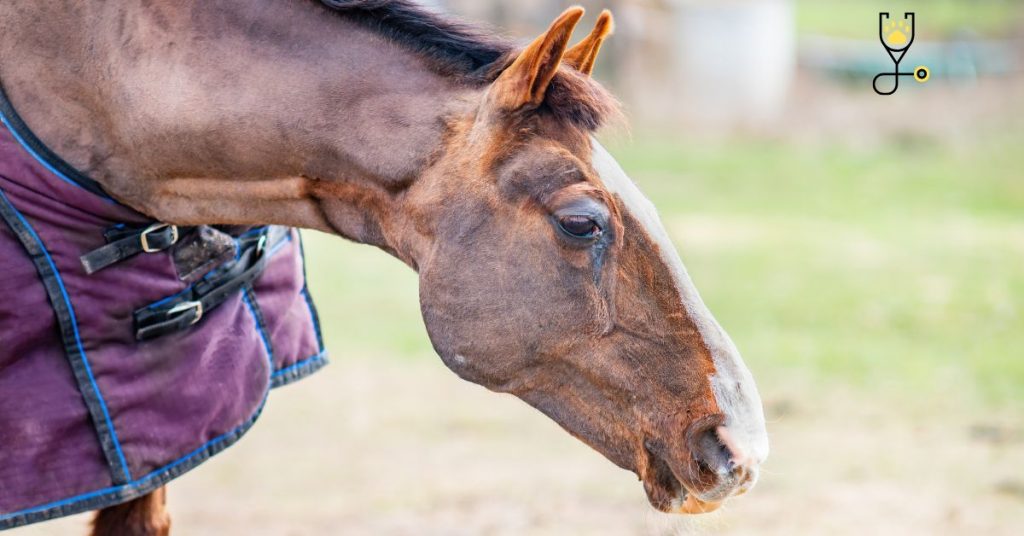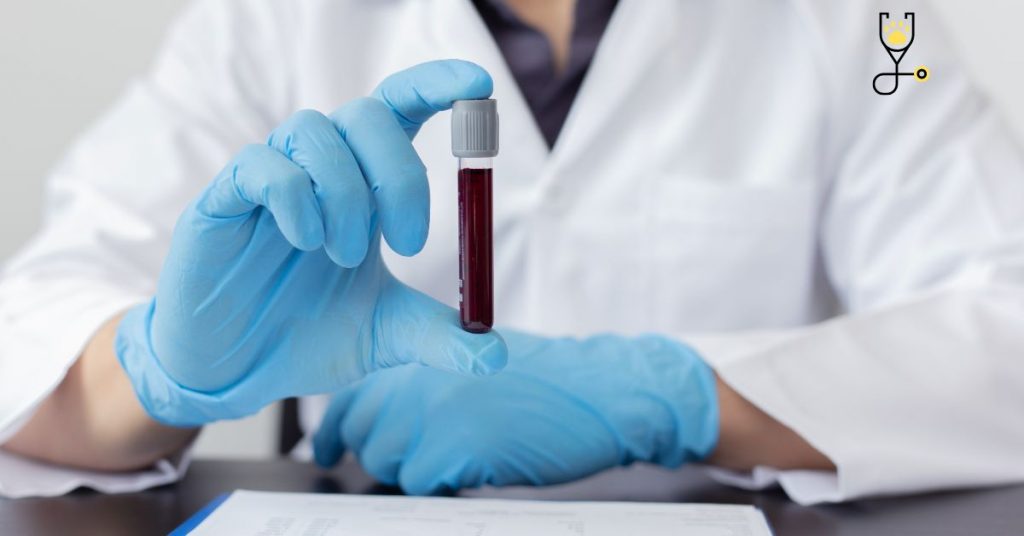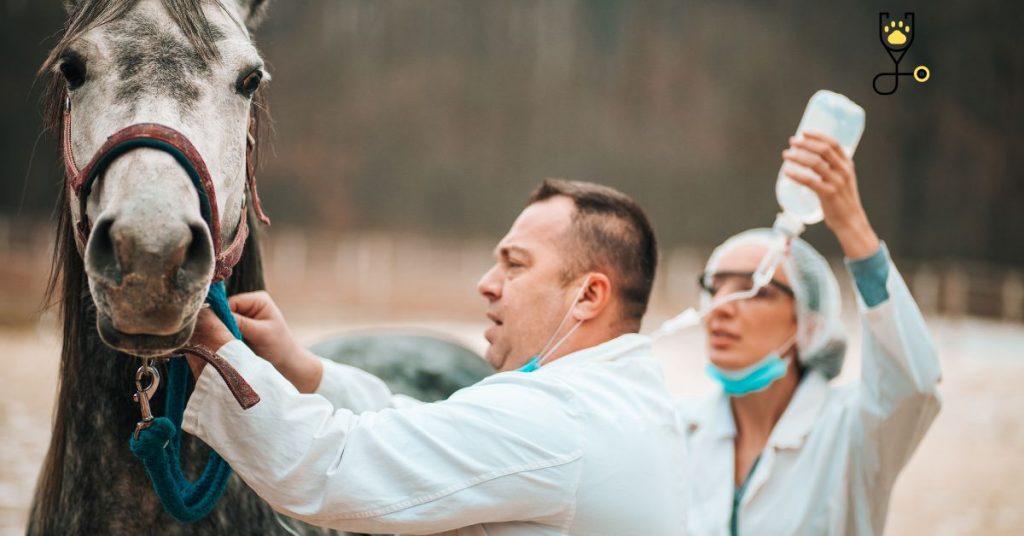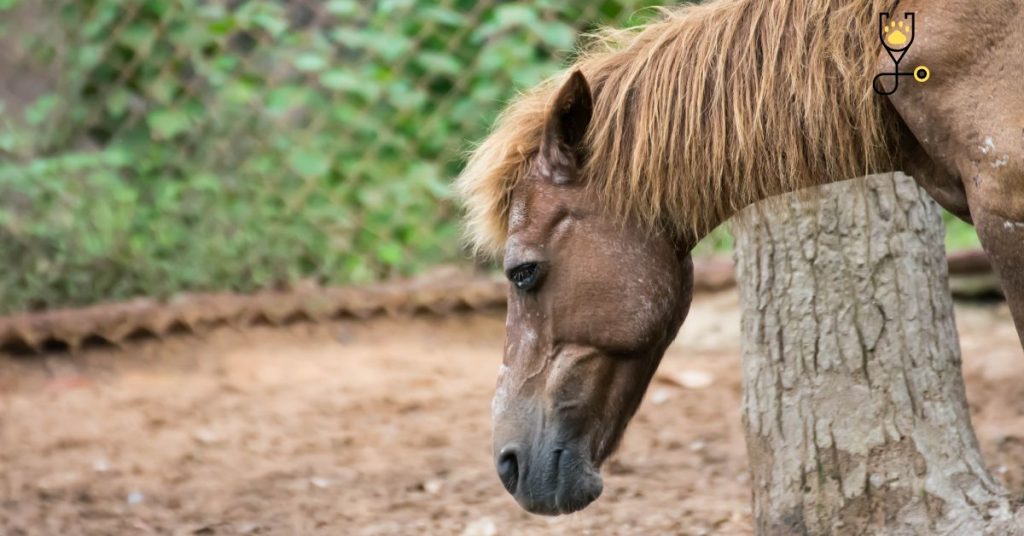If your horse is having trouble breathing, there’s a good chance he’s suffering from recurrent airway obstruction or RAO. RAO is a common respiratory problem in horses that can cause serious health complications if left untreated. In this blog post, we’ll discuss the symptoms, causes and treatment of RAO in horses. We’ll also provide tips on how to keep your horse healthy and breathe easy. Thanks for reading!
What Is A recurrent airway obstruction?
Recurrent airway obstruction (RAO) is a type of bronchitis that affects horses. It’s also known as heaves, chronic obstructive pulmonary disease (COPD) or broken wind. RAO is a condition that causes the horse’s airways to become inflamed and constricted, making it difficult for him to breathe. The inflammation is caused by an allergic reaction to certain particles in the environment, such as dust, pollen or mould. These particles can be found in hay, straw, bedding and even in the air, we breathe. When a horse inhales these particles, his immune system recognizes them as foreign invaders and produces antibodies to fight them off. This immune response leads to inflammation of the airways and the release of mucus, which further restricts airflow.
What are the symptoms of recurrent airway obstruction?
The most common symptom of RAO is a dry, hacking cough. Other symptoms include:
Difficulty breathing
This is often the first sign that something is wrong. If your horse is having trouble catching his breath, or if he’s constantly blowing his nose, it could be a sign of RAO.

Exercise intolerance
If your horse used to be able to go for long rides or play vigorously without getting winded, but now he’s easily fatigued, it could be a sign of RAO.
Wheezing
This high-pitched whistling sound is caused by restricted airflow in the lungs. It’s often heard when the horse exhales.
Increased respiratory rate
If your horse is panting more than usual, it could be a sign of RAO.
Increased heart rate
Because RAO makes it difficult for the horse to get enough oxygen, his heart has to work harder to pump blood around the body. This can lead to an increased heart rate.
Depression
Many horses with RAO become withdrawn and depressed due to their difficulty breathing.
What causes recurrent airway obstruction?
1. Dust
One of the most common triggers of RAO is dust. Dust particles can come from hay, straw, bedding and even arena footing. If your horse is exposed to large amounts of dust, he’s at increased risk of developing RAO.
2. Pollen
Another common trigger of RAO is pollen. Pollen particles are found in the air and can be inhaled by horses when they’re outside. If your horse is allergic to pollen, he’s at increased risk of developing RAO.
3. Mould
Mould spores are another common trigger of RAO. These tiny particles can be found in wet hay, straw or bedding. If your horse is exposed to mould, he’s at increased risk of developing RAO.

4. Smoke
Cigarette smoke is a known irritant and can cause inflammation in the airways. If you smoke around your horse, you’re putting him at increased risk of developing RAO.
5. Exercise
strenuous exercise can put stress on the respiratory system and lead to inflammation of the airways. If your horse is constantly working hard without rest, he’s at increased risk of developing RAO.
How is recurrent airway obstruction diagnosed?
– Physical examination: Your vet will start by performing a physical examination of your horse. He’ll look for signs of difficulty breathing, such as the increased respiratory rate or wheezing. He’ll also listen to your horse’s lungs with a stethoscope.
– Endoscopic examination: This is a procedure where a small camera is inserted into the horse’s nose and throat so that the vet can get a clear view of his airways. This allows the vet to look for signs of inflammation, such as mucus or swelling.
– Radiographs: X-rays can be helpful in diagnosing RAO. They can show signs of restricted airflow in the lungs or thickening of the airway walls.
– Blood tests: Blood tests can be used to rule out other conditions that could cause similar symptoms, such as pneumonia.

Preventions Of recurrent airway obstruction
There is no cure for RAO, but there are things you can do to prevent it from occurring or to reduce its severity.
– Avoid dusty environments: If your horse is prone to RAO, try to avoid places where there is a lot of dust, such as arenas or paddocks with dry soil.
– Use hay steamers: Hay steamers can be used to remove dust and mould spores from hay. This can help to reduce your horse’s exposure to these triggers.
– Use dust-free bedding: There are many types of bedding available that produce minimal dust when they’re used. These include wood shavings, paper bedding and straw pellets.
– Give your horse regular breaks: If your horse is working hard, make sure he has regular breaks so that he can rest and recover. This will help to reduce the stress on his respiratory system.
– Avoid smoking: Cigarette smoke is a known irritant and can trigger an attack of RAO. If you smoke, try to do it away from your horse.
– Keep your horse fit: A fit and healthy horse is less likely to develop RAO than one that is out of shape.
Make sure your horse gets plenty of exercises and isn’t carrying too much weight.
Treatment Of recurrent airway obstruction
There is no cure for RAO, but there are treatments that can help to relieve the symptoms and make the condition easier to manage.- Inhalers: Inhalers can be used to deliver medication directly to the lungs. This can help to reduce inflammation and ease breathing difficulty

1. Nebulisers
Nebulisers are devices that turn liquid medication into a fine mist. This mist can be inhaled by the horse, which helps to deliver the medication directly to the lungs.
2. Steroids
Steroids are a type of medication that can be used to reduce inflammation. They can be given orally, by injection or inhaled.
3. Antihistamines
Antihistamines can be used to relieve the symptoms of allergies, such as sneezing and runny nose. They can also help to reduce inflammation in the airways.
4. Bronchodilators
Bronchodilators are medications that open up the airways and make it easier to breathe. They can be given orally, by inhalation or by injection.
5. Surgery
In severe cases of RAO, surgery may be required to remove part of the damaged airway. This can help to improve airflow and make breathing easier.
Prognosis Of recurrent airway obstruction
The prognosis for horses with RAO is generally good. With proper management, most horses can continue to lead normal, active lives. However, some horses may require lifelong treatment to keep their symptoms under control.
Conclusion
Recurrent airway obstruction (RAO) is a condition that affects the horse’s respiratory system. It is caused by inflammation of the airways, which makes it difficult for the horse to breathe. There is no cure for RAO, but there are treatments that can help to relieve the symptoms and make the condition easier to manage. With proper care, most horses with RAO can lead normal, active lives.
Frequnety Asked Questions
1. What is recurrent airway obstruction?
Recurrent airway obstruction (RAO) is a condition that affects the horse’s respiratory system. It is caused by inflammation of the airways, which makes it difficult for the horse to breathe.
2. What are the symptoms of recurrent airway obstruction?
The symptoms of RAO can vary depending on the severity of the condition. Some horses may only have mild difficulty breathing, while others may experience more severe symptoms, such as exercise intolerance and coughing.
3. What causes recurrent airway obstruction?
RAO is caused by inflammation of the airways. This can be triggered by allergies, infections or exposure to dust or other irritants.
4. Is there a cure for recurrent airway obstruction?
There is no cure for RAO, but there are treatments that can help to relieve the symptoms and make the condition easier to manage.
5. How can I prevent my horse from developing recurrent airway obstruction?
There are a few things you can do to help prevent your horse from developing RAO, such as avoiding exposure to dust and other irritants, and keeping your horse fit and healthy.





